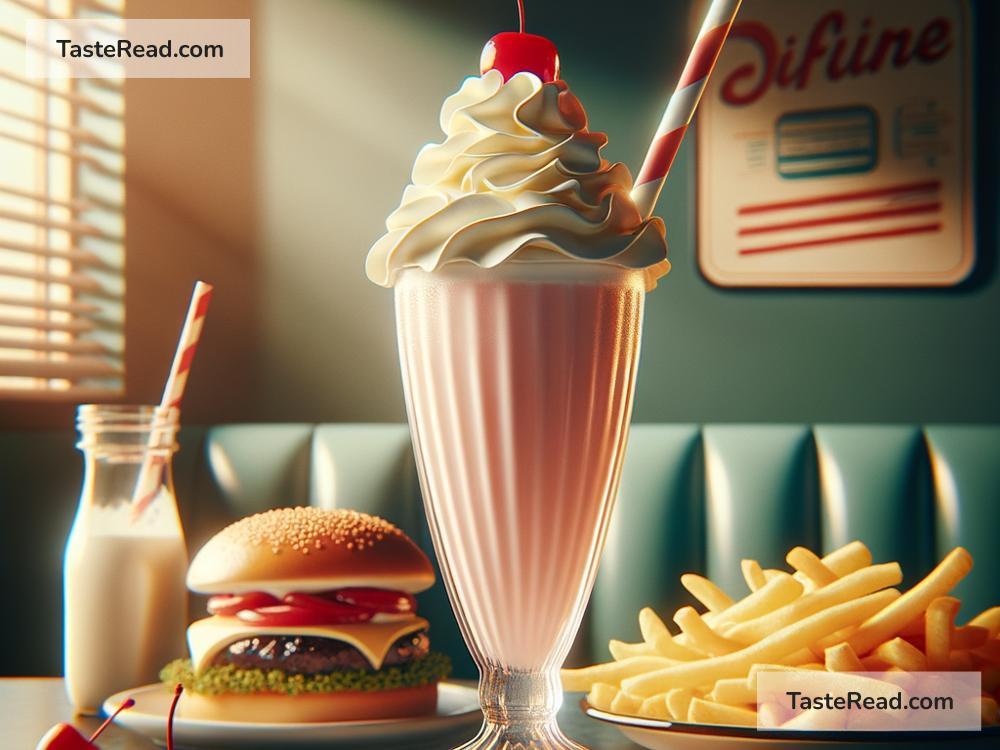The Influence of the American Milkshake
Milkshakes are one of America’s most iconic treats. At first glance, they might seem like a simple dessert—just milk, ice cream, and maybe some syrup blended together. But over the years, the humble milkshake has grown into a symbol of American food culture, influencing not just how people enjoy dessert but also how they connect with each other. From diners to drive-thrus, the milkshake has carved out a special place in history and continues to delight people all around the world.
Where It All Began
The story of the milkshake starts in the late 1800s. Believe it or not, the earliest milkshakes weren’t the creamy, delicious treats we know today. At first, a “milkshake” referred to a drink made with milk, eggs, and whiskey. Yes, whiskey! It wasn’t until the early 1900s that milkshakes became family-friendly as ice cream and flavored syrups like chocolate, vanilla, and strawberry replaced whiskey. Suddenly, this cold, sweet, and frothy beverage gained popularity across America.
In the 1920s, milkshake machines, like the Hamilton Beach mixer, were invented. These machines made it easier to blend ingredients into a smooth mixture and helped milkshakes become a standard feature in soda fountains and diners. By the 1950s, they were a part of the classic American experience.
Milkshakes and American Diners
If you’ve ever seen old movies or TV shows set in the ’50s and ’60s, you’ve probably noticed diners. These cozy restaurants were gathering places for friends, first dates, and families. And one of the most popular orders? Milkshakes. They were affordable, tasty, and easy to share. Served in tall glasses with a straw and sometimes topped with whipped cream and a cherry, milkshakes symbolized carefree fun and indulgence.
Diners became closely connected with milkshakes because they provided a space for people to relax and socialize. Milkshakes, along with burgers and fries, became “comfort food” in the truest sense. The diner culture influenced how Americans viewed eating out—it wasn’t just about the food; it was also about the experience.
Milkshakes Go Global
While milkshakes started as a uniquely American treat, they didn’t stay local for long. Fast food chains like McDonald’s and Burger King brought milkshakes to people all over the world. With easy-to-use machines and consistent recipes, these chains introduced milkshakes to international menus. Suddenly, drinking a milkshake was no longer just an American pastime—it was part of global food culture.
In many countries, milkshakes have been adapted to suit local tastes. For instance, in India, there are milk-based drinks like mango shakes and lassi, which are similar to milkshakes but incorporate tropical fruit and spices. In Japan, matcha (green tea) milkshakes are gaining popularity, blending the classic creamy texture with the bittersweet flavor of matcha. Milkshakes have proven to be endlessly customizable, making them a hit wherever they go.
The Social Side of Milkshakes
Beyond their taste, milkshakes also have cultural significance. They’re often seen as a “shared treat,” perfect for moments with friends or loved ones. Many people fondly remember sipping milkshakes alongside fries during trips to local diners or sharing one milkshake with two straws on a romantic outing. Milkshakes have also been associated with celebrations, whether enjoying them after winning a sports game or as a reward for a good grade in school.
Milkshake creations have become even more over-the-top in recent years. Some restaurants now serve “freakshakes,” which are milkshakes piled high with whipped cream, cookies, candies, and even slices of cake. These Instagram-worthy treats are a testament to how milkshakes continue to evolve and inspire creativity.
Healthy Milkshake Alternatives
While classic milkshakes are full of dairy and sugar, today’s health-conscious consumers have inspired new versions of the drink. People now enjoy “protein shakes” made with plant-based milks, fruits, and supplements like protein powder. These healthier options are perfect for athletes or anyone looking for a nutritious drink that still feels indulgent. Smoothies, which are often blended from fruits, vegetables, and yogurt, also share many similarities with milkshakes but come with added vitamins and minerals.
Even though these changes are happening, the original milkshake remains a nostalgic favorite. For many, it’s not just a drink—it’s a memory of good times.
Milkshakes in Pop Culture
Milkshakes have continued to hold a special place in pop culture. In music, food, and movies, milkshakes often show up as symbols of fun, innocence, and youthful energy. One classic example is the 2003 song “Milkshake” by Kelis, which made the drink a playful metaphor for self-confidence.
Movie scenes set in diners often feature milkshakes, helping to capture the all-American vibe of the setting. They’re not just drinks—they’re an integral part of the storytelling.
Conclusion
The milkshake may have started as a simple drink, but its influence has grown far beyond the glass. It represents joy, nostalgia, and connection, bringing people together over shared experiences. Whether you’re sipping a classic vanilla shake in a retro diner or enjoying a fancy freakshake topped with candy, the milkshake continues to shape food culture around the world. It’s proof that sometimes, the simplest things can have a lasting impact.
So, the next time you enjoy a milkshake, remember—you’re taking part in a sweet tradition that stretches back over 100 years. Cheers to milkshakes!


